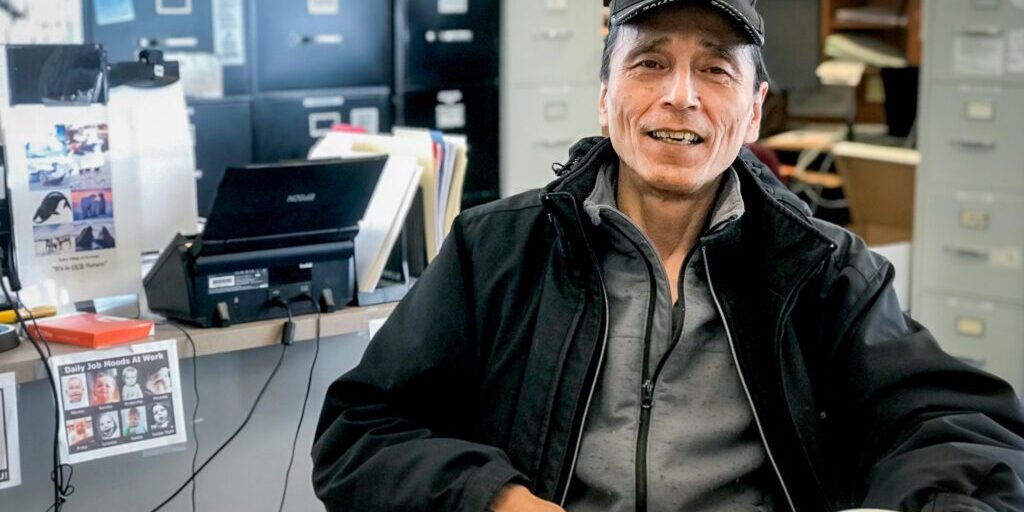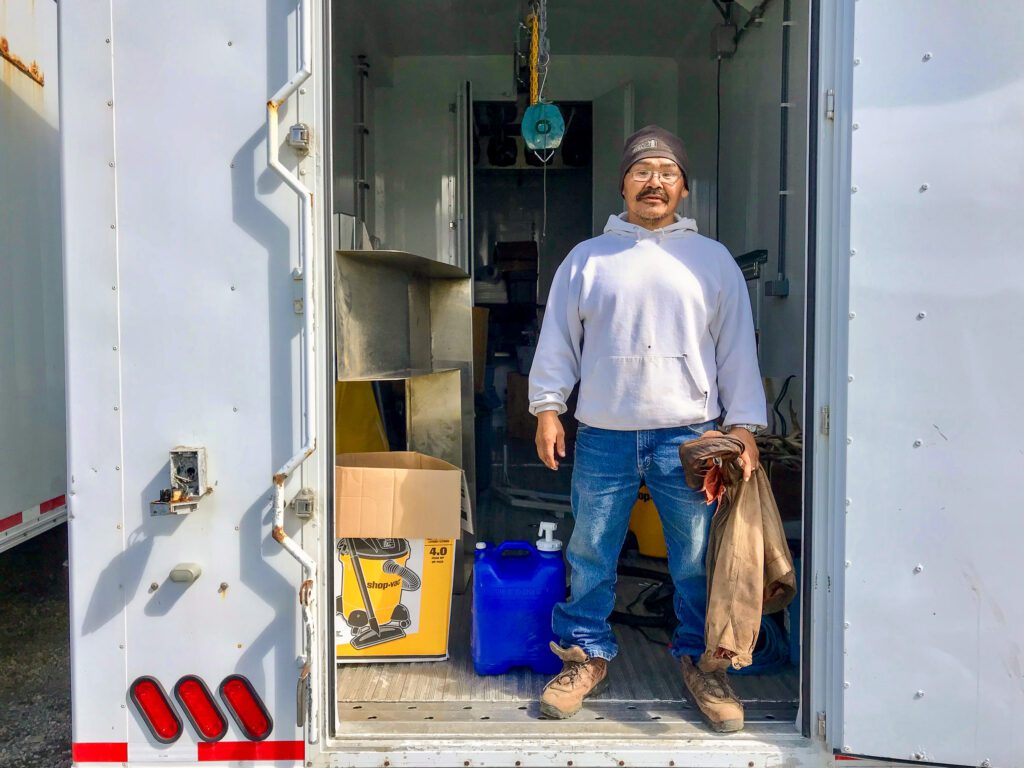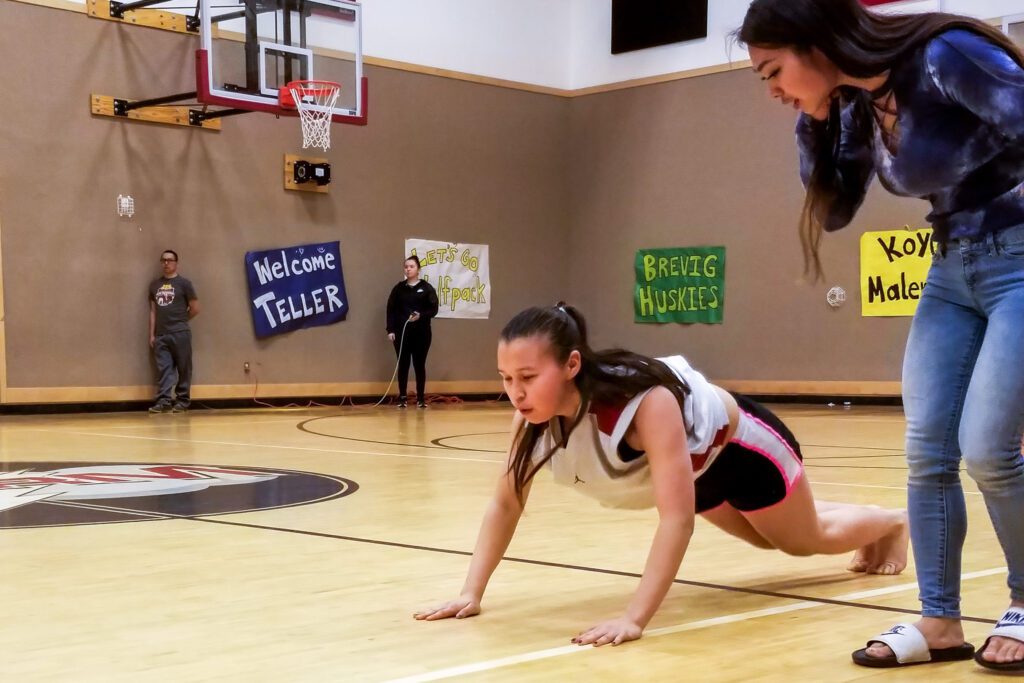When Delbert Pungowiyi looks out from the shore of his home, he often worries for future generations — because of what he doesn’t see.
In the St. Lawrence Island community of Savoonga, winter isn’t just when it gets colder and snowy: it’s also “when the Bering Sea locks up.” In Savoonga in the 1960s, more than a mile of solid sea ice extended from the shore during winter, making subsistence hunting possible. Delbert’s family and village depended on successful hunts. But this year, his village experienced a shock: no consistent sea ice. “We had no winter,” he says.
It’s changes like these that make him apprehensive for the future. “The changes that we’re witnessing today… (are) really hard to put into words.”

In Western Alaska, recent years have seen repeated crises befall rural communities. “For years,” Delbert says, “weather patterns have been changing, and now… we’re starting to see the Arctic experience disasters.” In the winters of 2013 and 2015, for example, subsistence walrus hunting conditions were so poor (and the harvest so low) that fish had to be flown into Savoonga, a place where, in Delbert’s words, “food security since time immemorial has been the Bering Sea.”
In late 2016, an unusually strong winter storm caused approximately $3 million in damages to city buildings and dozens of homes in Savoonga and its neighboring village, Gambell. Alaska Governor Bill Walker declared the island a disaster area and provided emergency funds from the state. Local animals seem affected, too. Scientists have recently observed mysterious illnesses in Bering Sea seals; a KNOM story detailed new efforts to study widespread die-offs of shorebirds.
Delbert once thought his most important work was behind him. But now, he says, he’s filled with purpose. Being a father has changed his perspective: he wants his children to inherit a world in which they can still be a part of the subsistence culture into which they were born. He’s still buoyed by hope — and faith. “God’s message to me was, ‘you are not done yet,’” Delbert told KNOM. “When I speak for my people, I’m fearless,” he says. “I may not make an impact, but I have to do what I can.”
Hear Delbert’s story right here on knom.org.
Image at top: Delbert Pungowiyi, tribal chief in Savoonga. Photo: Zoe Grueskin, KNOM.







